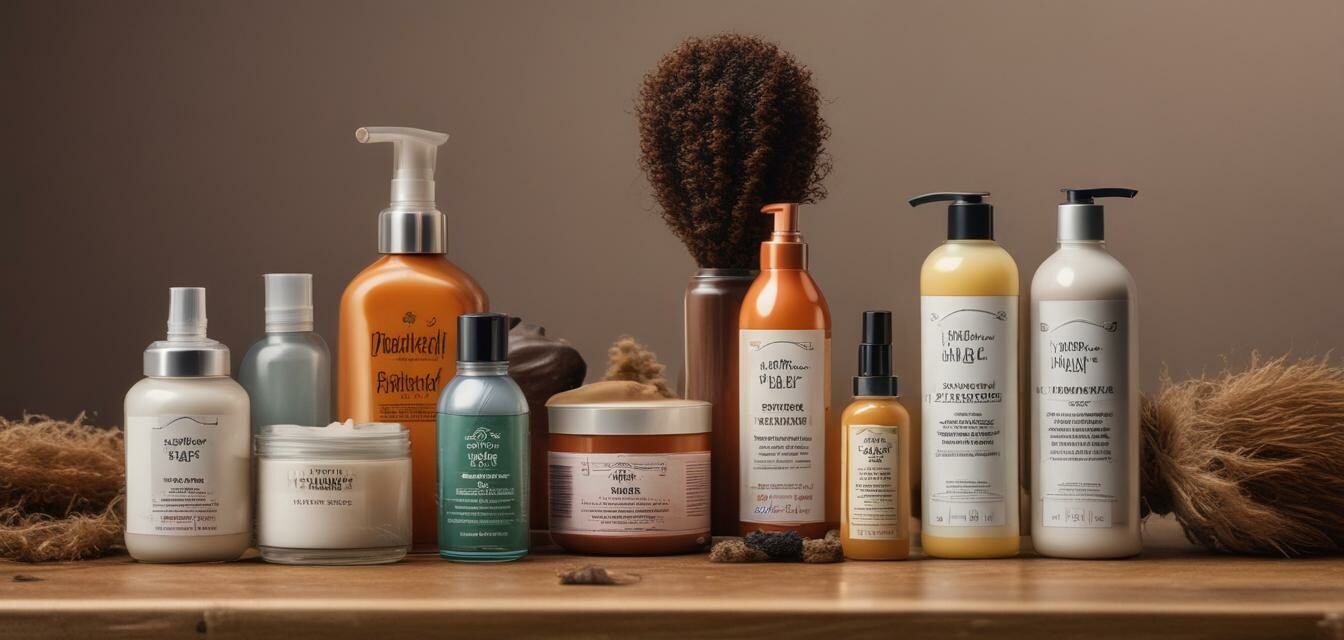
Understanding protein treatments: How and when to use
- Protein treatments strengthen hair and restore its structure.
- They are particularly beneficial for textured and damaged hair.
- Timing and frequency of use depend on individual hair needs.
- Overuse can lead to protein overload, resulting in dryness.
- Combine protein treatments with moisture-rich products for balanced care.
Welcome to the world of hair care, where understanding the right treatments can make all the difference. Today, we will delve into the fascinating realm of protein treatments, their importance for textured hair, and how to use them effectively.
What are protein treatments?
Protein treatments are specialized hair treatments designed to infuse the hair with protein. This is vital since hair is primarily made up of a protein called keratin. Over time, factors such as heat damage, environmental stressors, and chemical treatments can deplete the hair of its natural protein, leading to weakness, breakage, and dullness.
Benefits of protein treatments for textured hair
For individuals with textured hair, the benefits of protein treatments are manifold. Here’s a detailed breakdown:
| Benefit | Description |
|---|---|
| Strengthening | Reinforces the hair structure and reduces breakage. |
| Repairing Damaged Hair | Helps mend split ends and restore the hair cuticle. |
| Elasticity | Enhances the stretchability of the hair, allowing for better styling. |
| Frizz Control | Reduces frizz by sealing the outer layer of the hair. |
When to use protein treatments
Understanding when to incorporate protein treatments into your routine is essential for optimal hair health. Here are some signs to look out for:
- The hair feels overly soft and mushy, indicating a lack of strength.
- Visible breakage and split ends have increased.
- Your styling routine involves extensive heat use.
- Your hair feels limp and lacks definition.
- Following chemical processes such as coloring or relaxing.
Types of protein treatments
There are various types of protein treatments to explore. Here’s a quick overview of each type:
| Type of Treatment | Description |
|---|---|
| Light Protein Treatments | Suitable for regular use; they strengthen without weighing hair down. |
| Deep Protein Treatments | Intensive treatments designed for severe damage; used sparingly. |
| Moisturizing Protein Treatments | A blend of protein and moisture to maintain balance in hair. |
How to apply protein treatments
Applying protein treatments correctly is crucial for efficacy. Here’s a step-by-step guide:
- Start with clean, damp hair.
- Section your hair to ensure even application.
- Apply the treatment from the roots to the ends.
- Use a wide-tooth comb to distribute the product evenly.
- Follow the product instructions on leave-in time (usually 20-30 minutes).
- Rinse thoroughly with cool water.
- Follow up with a deep conditioner for moisture.
Signs of protein overload
While protein is important, too much of it can lead to protein overload. Here are some signs:
- Hair is stiff and brittle.
- Breakage is occurring despite treatment.
- Hair feels rough to the touch.
- Styling becomes difficult as hair lacks flexibility.
Combining protein treatments with moisture
To achieve the best results, it’s essential to maintain a balance between protein and moisture. Here's how:
Tips for balancing:- Rotate between protein treatments and deep conditioning sessions.
- Use moisture-rich products before and after protein treatments.
- Monitor your hair’s response to adjust frequency accordingly.
Conclusion
Protein treatments can be a game-changer for textured hair, rejuvenating and fortifying strands to promote health and beauty. Keep an eye on how your hair responds to different treatments, and strike a balance between protein and moisture for the best results.
Pro tips for beginners
- Always start with a light protein treatment to gauge your hair’s response.
- Consult a professional stylist for recommendations tailored to your hair type.
- Be patient—results may take time, especially for damaged hair.
Pros
- Strengthens hair structure.
- Restores elasticity.
- Helps repair damaged hair.
Cons
- Overuse can cause protein overload.
- May require additional moisturizing treatments.
For more hair care tips and product recommendations, check out our Hair Care Tips category! Explore innovative techniques on Buying Guides to make informed decisions on the best products for your hair. Don't forget to browse our other categories for Deep Conditioners and Hair Masks or Natural Oils and Serums that can complement your hair care routine.

